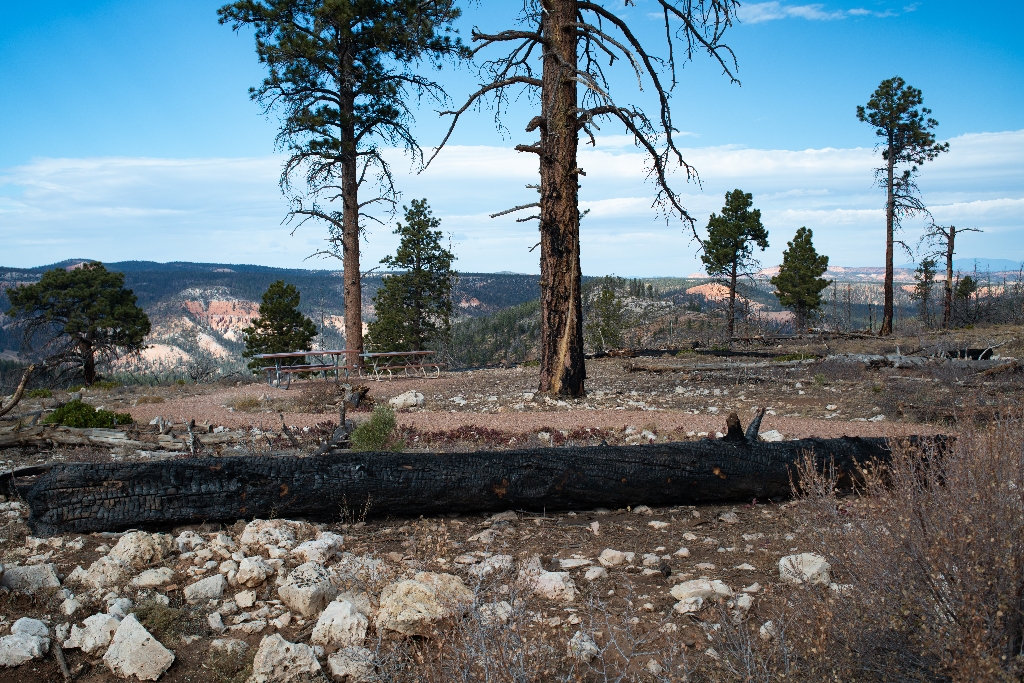
Picnic tables are available for use at this pull-out surrounded by burned forest.
Bridge Fire
The Bridge Fire began on June 14th, 2009 at Bridge Hollow on the Dixie National Forest to the west. It was closely monitored for resource benefits in this fire-dependent ecosystem, including re-establishing aspen and ponderosa pine in an area dominated by shade-tolerant white fire. Due to the nature of mixed conifer forest, with dense trees low in the understory, the stand-replacing fire behavior you see was normal and expected.
Hot and dry conditions combined with strong winds contributed to very fast-moving fire behavior, and the the Bridge fire entered the park on July 14th. Ultimately around 3,500 acres (about 50% in the park and 50% on Forest Service land) would burn. The burned area stretches along Whiteman Bench between Swamp Canyon and Farview Point for about 1.5 miles, primarily to the west, and in some places reaches below the rim to the east. This was the largest natural wildfire in the park's history.
300 firefighters from Utah, Nevada, and Arkansas would cooperate to hold the fire along the main park road. Three helicopters were in use for aerial foam and water drops.
There were no injuries or property damage. On July 14th at 4:30 p.m. approximately 50 vehicles were led down from Rainbow Point and escorted out of the park on the Yovimpa Pass Road--a forest service road that bypassed the fire along the main road. Another 10 RVs and motorcycles unable to travel the forest service road were escorted down the main road when it was safe.
Today, the snags (dead, standing trees) provide important habitat for a variety of species, including woodpeckers, nuthatches, owls, and small mammals who will help to disperse the seeds that will regenerate this forest.
What regrowth can you see from where you stand?
Is there something we missed for this itinerary?
Itineraries across USA


















































